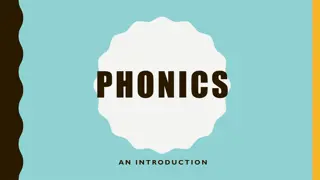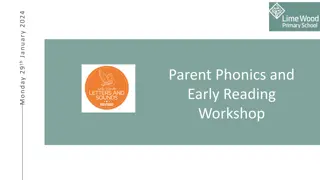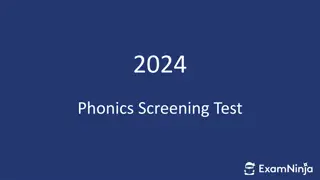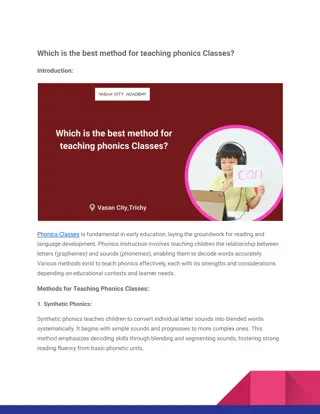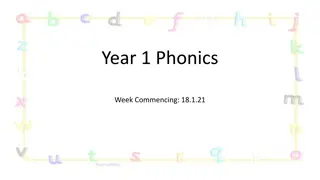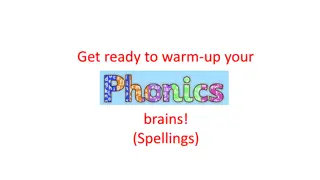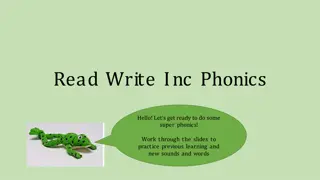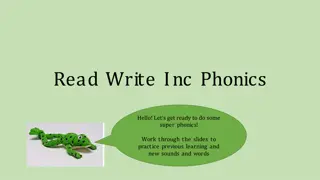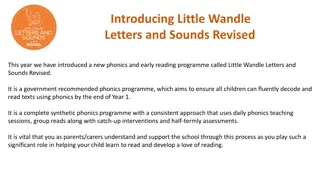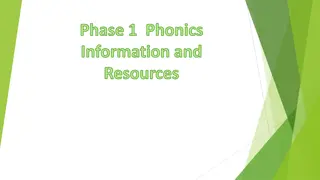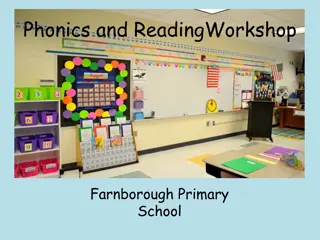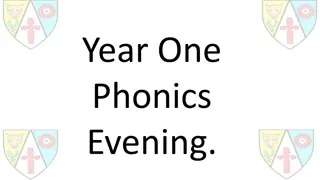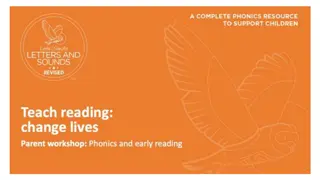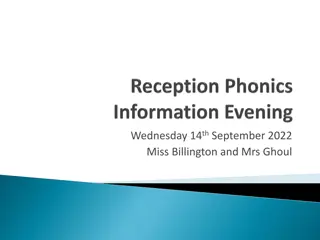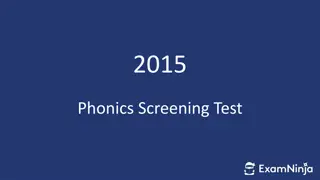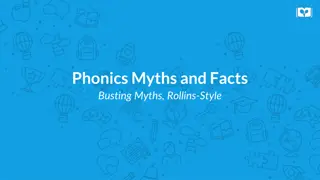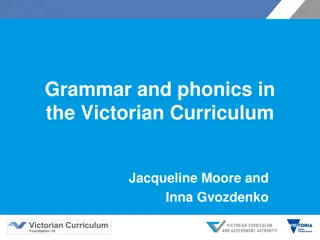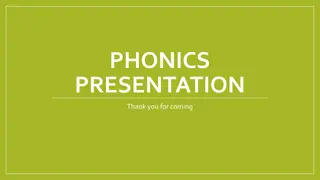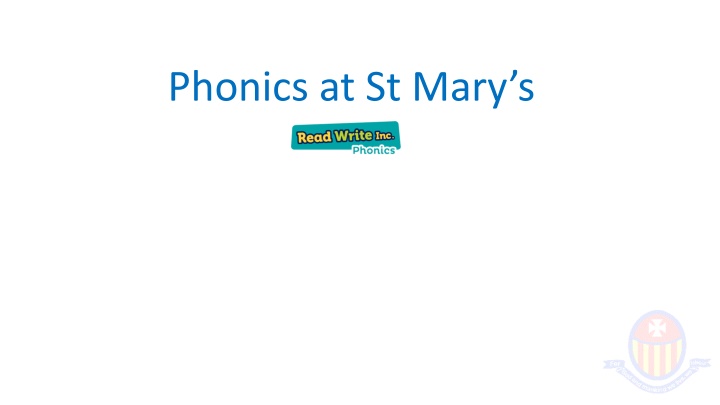
Engaging Children in Phonics and Reading at St. Mary's
Prepare children to be enthusiastic readers by engaging them in phonics and reading at St. Mary's. The Reading Framework 2023 emphasizes the importance of early literacy skills and engaging activities such as nursery rhymes, call-and-response songs, and phonics instruction using RWI scheme. Parents play a crucial role in instilling a love for reading in children from a young age.
Download Presentation

Please find below an Image/Link to download the presentation.
The content on the website is provided AS IS for your information and personal use only. It may not be sold, licensed, or shared on other websites without obtaining consent from the author. If you encounter any issues during the download, it is possible that the publisher has removed the file from their server.
You are allowed to download the files provided on this website for personal or commercial use, subject to the condition that they are used lawfully. All files are the property of their respective owners.
The content on the website is provided AS IS for your information and personal use only. It may not be sold, licensed, or shared on other websites without obtaining consent from the author.
E N D
Presentation Transcript
Parents who engage their children in books prepare them to become committed and enthusiastic readers; they can transform their attitudes to reading DFE, The Reading Framework 2023 Phonics teaches children the link between written letters and the speech sounds they represent Read Write Inc. sometimes referred to as RML or RWI Government backed scheme and embedded here at St. Mary s for many years
Making sure that they become engaged with reading from the beginning is one of the most important ways to make a difference to their life chances. DFE, The Reading Framework 2023 In the Nursery, the initial phase of phonics focuses on 7 different areas Becoming a fluent, skilled and attentive reader starts even before children encounter a book Driven by the quality of their talk
Making sure that they become engaged with reading from the beginning is one of the most important ways to make a difference to their life chances. DFE, The Reading Framework 2023 Think out loud and modelling Paying close attention Rephrasing and extending Validating the children s attempts at using new vocabulary and grammar Asking closed and open questions Explaining why things happen Deliberately connecting current and past events (eg Do you remember when ) Extending vocabulary and explaining new words Connecting one idea or action to another Helping articulate ideas in well formed sentences
Learning poetry and songs using call and response allows children to join in gradually. Each repetition strengthens their vocabulary, embedding new words. DFE, The Reading Framework 2023 Nursery rhymes are an integral part of early literacy learning Recognise patterns and rhyme Builds their knowledge of sounds Singing Nursery rhymes vital
Phonics in Nursery/Reception Set 1 sounds Begin to learn letter sounds from the RWI scheme Specific order Each sound has a multisensory rhyme and action
Phonics in Nursery/Reception Set 1 sounds Recognise it Hear it Say it Read it Write it *diagraphs
Say hello to Fred. Fred can only talk in sounds... He says c_a_t. Not cat. We call this Fred Talk. When reading a word we encourage children to follow three steps: 1. Identify the diagraphs 2. Fred Talk 3. Read the word
Lets have a go! m u d Are there any diagraphs? Fred Talk Read the word mud
sh i p Are there any diagraphs? sh Fred Talk Read the word ship
Encourage to sight read where possible so they are not reliant on segmenting and blending every word Many words in the English language which are not phonetically decodable We call these red (tricky) words In Reception, children are given these ones in sets of 5 When children are secure in their 5 words they move on to the next set of 5
Set 2 sounds Reception and Year 1 Move to set 2 sounds Made up of mainly diagraphs and trigraphs Not sound out letters individually e.g. i g h but recognize them in a word as one sound igh Application within writing
Set 3 sounds Year 1 and Year 2 Alternative ways of writing the sounds they have already learnt These differences will begin to build children s knowledge of spelling choices Exposed to split digraphs e.g. a-e make and cake
We focus on forming letters in lower case The starting point for letters is absolutely crucial Each letter has a rhyme to help children to remember how to form each Most letters are a continuous movement This continuous motion when forming letters with exit flicks ensures that as children begin to join their writing they are fluid writers with accurately sized letters
In the summer term in Year 1, children will complete a phonics screening check This is a national check to ensure children know their phonics sounds and are able to segment and blend confidently If children do not pass the phonics check in Year 1, they will retake this in the autumn term in Year 2
Reading Books Initially sent home with a sound blending book and a library book A banded book bag book It is not a race through levels, focus on reading strands Children need to be exposed to words several times before they become fluent and automatic
At home Read as many stories to your child as you can and talk about the stories together, even reading your favourites over and over Explain the meaning of new words Show the fun that can be gained by listening to stories Read some stories at a higher level than they can read themselves Going over red (tricky) words daily, spotting them in stories



